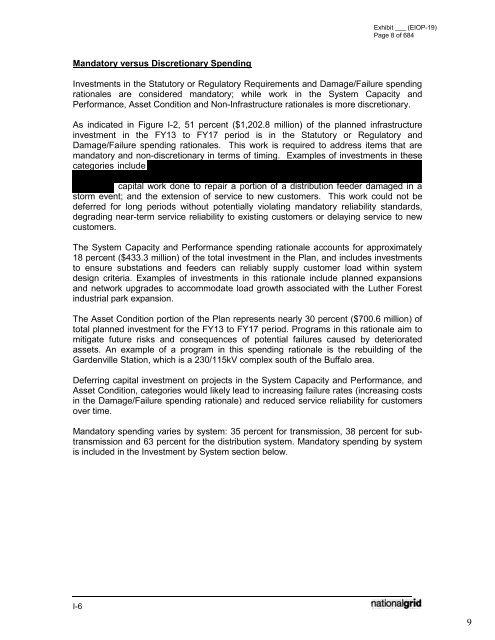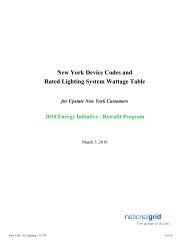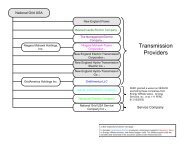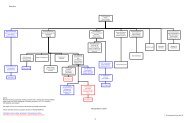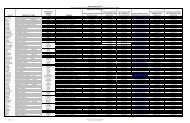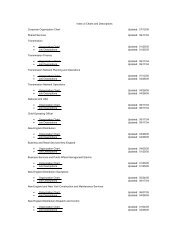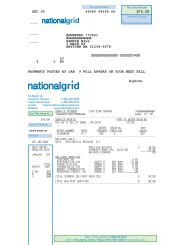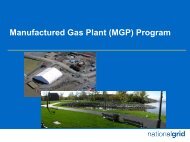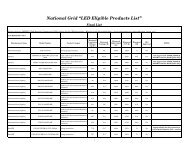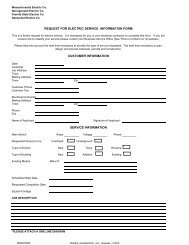January 2012 Capital Investment - National Grid
January 2012 Capital Investment - National Grid
January 2012 Capital Investment - National Grid
Create successful ePaper yourself
Turn your PDF publications into a flip-book with our unique Google optimized e-Paper software.
Exhibit ___ (EIOP-19)Page 8 of 684Mandatory versus Discretionary Spending<strong>Investment</strong>s in the Statutory or Regulatory Requirements and Damage/Failure spendingrationales are considered mandatory; while work in the System Capacity andPerformance, Asset Condition and Non-Infrastructure rationales is more discretionary.As indicated in Figure I-2, 51 percent ($1,202.8 million) of the planned infrastructureinvestment in the FY13 to FY17 period is in the Statutory or Regulatory andDamage/Failure spending rationales. This work is required to address items that aremandatory and non-discretionary in terms of timing. Examples of investments in thesecategories includecapital work done to repair a portion of a distribution feeder damaged in astorm event; and the extension of service to new customers. This work could not bedeferred for long periods without potentially violating mandatory reliability standards,degrading near-term service reliability to existing customers or delaying service to newcustomers.The System Capacity and Performance spending rationale accounts for approximately18 percent ($433.3 million) of the total investment in the Plan, and includes investmentsto ensure substations and feeders can reliably supply customer load within systemdesign criteria. Examples of investments in this rationale include planned expansionsand network upgrades to accommodate load growth associated with the Luther Forestindustrial park expansion.The Asset Condition portion of the Plan represents nearly 30 percent ($700.6 million) oftotal planned investment for the FY13 to FY17 period. Programs in this rationale aim tomitigate future risks and consequences of potential failures caused by deterioratedassets. An example of a program in this spending rationale is the rebuilding of theGardenville Station, which is a 230/115kV complex south of the Buffalo area.Deferring capital investment on projects in the System Capacity and Performance, andAsset Condition, categories would likely lead to increasing failure rates (increasing costsin the Damage/Failure spending rationale) and reduced service reliability for customersover time.Mandatory spending varies by system: 35 percent for transmission, 38 percent for subtransmissionand 63 percent for the distribution system. Mandatory spending by systemis included in the <strong>Investment</strong> by System section below.I-69


